The earth: how old does it look?
Even many of those who believe that the earth is ‘young’ think that it looks ‘old’. But does it?

The young man, a carpenter in his early twenties who had recently taken up downstairs lodging in my home, looked at me warily. ‘All right then,’ he said, ‘how old do you guys think the earth is?’
I knew he had had no Christian upbringing, knew nothing of the Bible, and would have been thoroughly ‘evolutionized’ at school. I had just been telling him about my work for a creation ministry, and he was most curious. But when he asked his question about the earth’s age, my inner response was, ‘Uh oh, here it comes.’
Knowing how people in our culture are indoctrinated with belief in an earth millions of years old, I braced myself for the usual incredulous rejection when I said what I truly believed, ‘It’s only a few thousand years old—less than 10,000, probably around 6,000 years or so.’
To my surprise, he said, ‘That’s good.’
‘Why?’ I blurted out.
‘Because,’ he replied, ‘I’ve always thought it looked young.’
Pondering this incident at a later date, I realized that my own reaction (it blew my mind somewhat) showed that, however strong my conviction in the biblical record, and however strong some recent-creation evidences might be, I had become unconsciously influenced by the notion that the earth, though young, looks old.
In fact, there are many firmly Bible-believing Christians who think that way. Even in the ‘kosher’ creationist literature there are sometimes attempts to explain why the earth has an ‘appearance of age’—i.e., looks old.
But in fact it’s easy to demonstrate that this cannot be true. Even if the earth really were millions or billions of years old, one could not say that it ‘looked old’—that one glance at rock layers and canyons just ‘shouted’, ‘Old Earth!’. To justify that statement, I don’t even have to get into sophisticated references to modern philosophers of science, who agree that no facts ‘speak for themselves’ anyway. All we need do is remember that some of the greatest minds that ever lived, the fathers of modern science—Newton, for example—looked at the same earth that we look at today, and did not ‘see’ millions of years. Just as the young carpenter, a truly independent thinker who had somehow escaped the indoctrination of our age, did not ‘see’ the millions of years either.
The earth is only seen as ‘looking old’ because we all take unconscious belief systems to the evidence. In other words, it could be said that the earth looks neither old nor young—it all depends on the ‘belief glasses’ through which one is viewing (interpreting) the evidence. Or to put it another way, it is just as valid for me to say, looking at the world through the ‘lens’ of the Bible (rather than the humanistic, evolutionized lens of our culture), that it ‘looks young’ (i.e. thousands, not billions of years old).
Summarizing just some of the evidence that is consistent with a young age for the world:

1) The continents are eroding too quickly.
If the continents were billions of years old, they would have eroded by wind and water many times over. Mountain uplift and other ‘recycling’ processes are nowhere near capable of compensating for this.1
2) There is not enough helium in the atmosphere.

Helium, a light gas, is formed during radioactive alpha decay in rock minerals. It rapidly escapes and enters the atmosphere much faster than it can escape Earth’s gravity.2 Even if God had created the world with no helium to begin with, the small amount in the atmosphere would have taken at most around two million years to accumulate. This is far less than the assumed 3,000-million-year age of the atmosphere.
3) Many fossils indicate that they must have formed quickly, and could not have taken long time-spans.
a) Common fossils.
There are billions of fossil fish in rock layers around the world which are incredibly well-preserved. They frequently show intact fins and often scales, indicating that they were buried rapidly and the rock hardened quickly. In the real world, dead fish are scavenged within 24 hours. Even in some idealized cold, sterile, predator-free and oxygen-free water, they will become soggy and fall apart within weeks.3 A fish buried quickly in sediment that does not harden within a few weeks at the most will still be subject to decay by oxygen and bacteria, such that the delicate features like fins, scales, etc. would not preserve their form. Rapid burial in the many underwater landslides (turbidity currents) and other sedimentary processes accompanying Noah’s Flood would explain not only their excellent preservation, but their existence in huge deposits, often covering thousands of square kilometres.
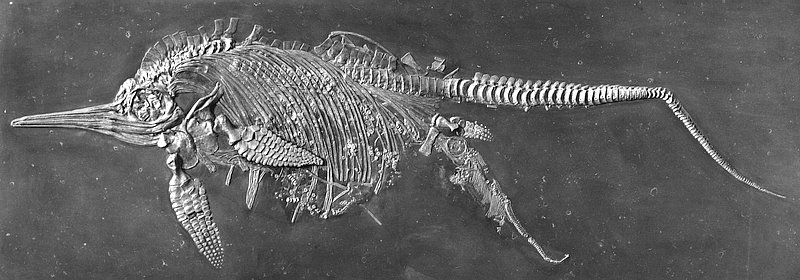
b) Special examples.
We’ve often featured in this magazine instances which are particularly spectacular, like the mother ichthyosaur apparently ‘freeze-framed’ in the process of giving birth (above). Then there are the fossil fish which are found either in the process of swallowing other fish (below) or with undigested fish intact in their stomachs.
4) Many processes, which we have been told take millions of years, do not need such time-spans at all.

photo by Len Cram

photo by Renton Maclachlan

photo © creation.com

photo by Clyde Webster
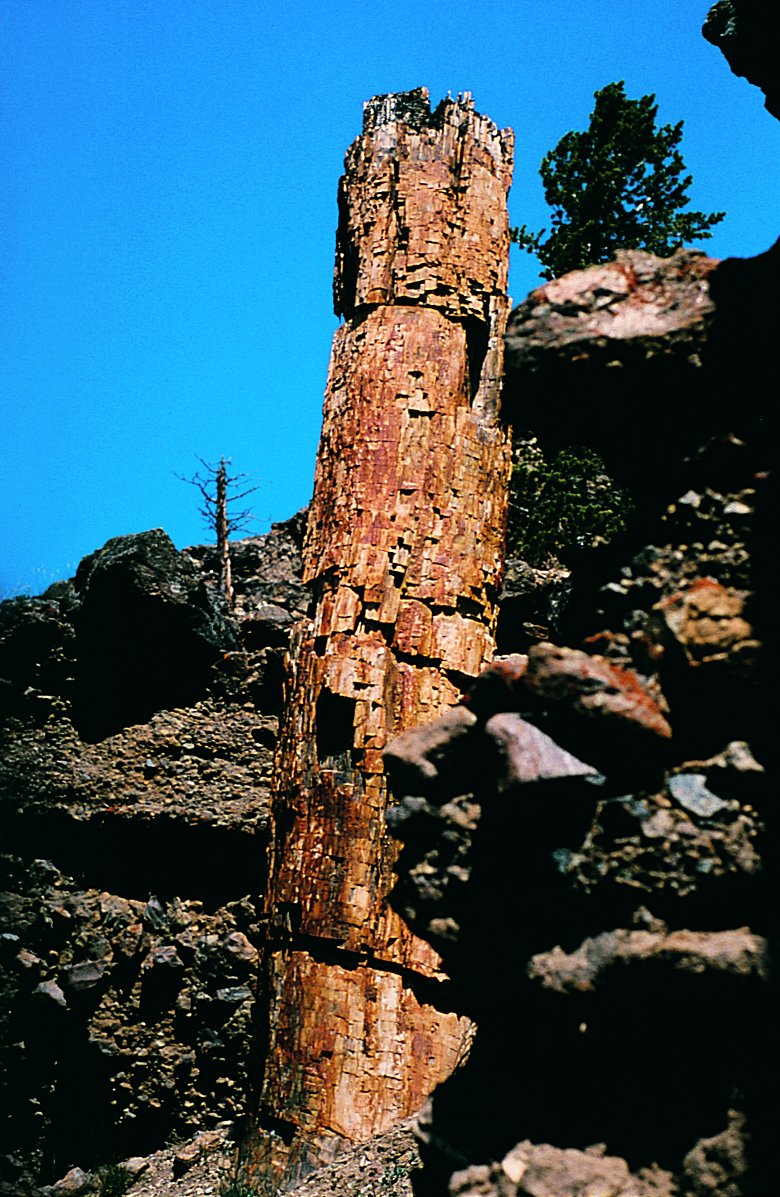
a) Coal formation.
Argonne National Laboratories have shown that heating wood (lignin, a significant component) and clay at 150°C (rather cool geologically) for 4 to 36 weeks, in a sealed quartz tube with no added pressure, forms high-grade black coal.4
b) Stalactites and stalagmites.
Many examples in Creation magazine have shown that cave decorations form quickly, given the right conditions. The photo (in Creation magazine) is of a mining tunnel in Mt Isa, Queensland, Australia. The tunnel was only 50 years old when the photo was taken.
c) Opals.
Despite the common teaching that it takes millions of years to form opal, Australian researcher Len Cram has long been growing opal in his backyard laboratory. His opal (photo, by Dr Cram) is indistinguishable, under the electron microscope, from that mined in the field. He was awarded an honorary doctorate (by a secular university) for this research. All he does is mix together the right common chemicals — no heat, no pressure, and definitely no millions of years.
d) Rock and fossil formation.
Scientists have long known that petrifaction can happen quickly. The ‘petrified’ bowler hat (photo, by Renton Maclachlan) is on display in ‘The Buried Village’, an open air museum dedicated to the Mt Tarawera eruption, in New Zealand. The photo shows a roll of no. 8 fencing wire which, in only 20 years, became encased in solid sandstone, containing hundreds of fossil shells. Petrified wood can also form quickly under the right conditions—one process has even been patented.5
The famous multiple levels of ‘fossil forests’ in America’s Yellowstone National Park (photo, by Clyde Webster) have now been shown to have formed in one volcanic event.6 Successive mudflows transported upright trees (minus most of their roots and branches) whose tree-ring signatures confirm that they grew at the one time.
5) The oceans are nowhere near salty enough.
Each year, the world’s rivers and underground streams add millions of tonnes of salt to the sea, and only a fraction of this goes back onto the land. Using the most favourable possible assumptions for long-agers, the absolute maximum age of the oceans is only a tiny fraction of their assumed billions-of-years age.7
Despite some inevitable unsolved problems in such a complex issue (see below for why radiometric dating is not infallible), it is thus not hard to establish:
Jesus and the age of the world

The ‘secular timeline’, from an alleged ‘big bang’ to now, is accepted by most people in the evangelical Christian world, even though they would deny evolution. However, this puts people at the ‘end’ of creation (see diagram). But in several places in the Bible, the Lord Jesus Christ, the Creator made flesh, makes it plain that this is wrong—people were there from the beginning of creation. This means that the world cannot be billions of years old.
For example, dealing with the doctrine of marriage, Jesus says in Mark 10:6, ‘But from the beginning of the creation, God made them male and female.’
In Luke 11:50–51, Jesus says:
‘That the blood of all the prophets, which was shed from the foundation of the world, may be required of this generation; From the blood of Abel to the blood of Zacharias …’.
Romans 1:20 makes it plain that people can clearly see God’s power by looking at the ‘things that are made’, and that people have been able to see this ‘from the creation of the world’. Not billions of years after creation.
The reasonableness of believing what the Creator of the world says in His Word, the Bible, about the world being thousands, not millions or billions, of years old.
The fact that the earth neither ‘looks old’ nor ‘looks young’ as such—it all depends on the ‘glasses’ through which the evidence is interpreted. We all need to be aware of how much we have been conditioned by our culture to ‘see’ geological things as ‘looking old’.
The earth is old!
But let us stretch our minds still further. It concerns the way we use words such as ‘old’ or ‘young’ for the earth’s age. I actually believe that the earth is old—very old. It is thousands of years old—as many as six thousand, in fact. Does that angle surprise you? My point is to make us aware of how we have allowed our culture to condition us into thinking that a thousand years is a very short time, and that ‘old’ always means millions or billions of years.
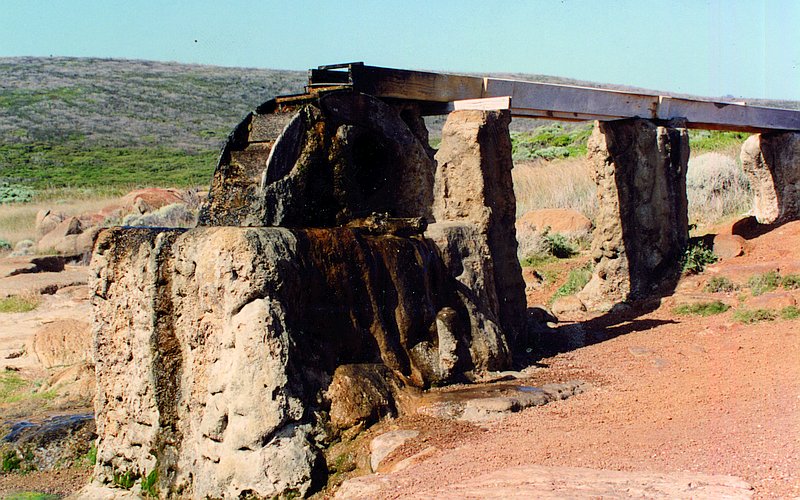
That is why tourists, coming across the ‘petrified waterwheel’ in Western Australia gawk in amazement. ‘It only took sixty years to cover this thing in solid rock?’ Sixty years, with water carrying dissolved limestone dripping night and day onto an object, is actually an incredibly long time. It is our culture, soaked in the myth of ‘deep time’, that has indoctrinated us into the belief that a million years (an unimaginable time period, in reality) is only like ‘yesterday’.
We need to recapture our thoughts from this enslavement to secular philosophy (see Colossians 2:8, 2 Corinthians 10:4–5). The Bible concurs with this way of looking at things. In 1 Chronicles 4:22, it refers to human records as ‘ancient’. But it is clear from the Bible’s genealogies that at the time of its writing, ‘ancient’ meant no more than some 4,000 years—certainly not billions. This realization puts things in perspective when Scripture also talks of ‘ancient mountains’ (Deuteronomy 33:15), an ‘ancient’ river (Judges 5:21) and ‘ancient times’ (Isaiah 46:10). Compared to a person’s lifetime, these things are indeed ancient—thousands of years old. The ‘millions of years’ idea is nowhere found in the Bible.
What’s more, accepting a billions-of-years time-span for creation (very common among evangelical leaders) undermines the testimony of Jesus Christ, the Creator of the world (see Q&A: Jesus Christ for evidence) — see above right. Not only that, but it turns the whole logic of the Gospel upside down, by putting the effects of the Curse before the Fall. Death, thorns, cancer, suffering and bloodshed millions of years before sin must be accepted if the fossils were laid down before people were created. Such thinking twists the Bible into foolish self-contradiction, because it would put death, the ‘last enemy’ (1 Corinthians 15:26) into a creation which God calls ‘very good’ (Genesis 1:31).
So next time you hear someone say that the earth ‘looks old’, you can respectfully disagree—it can look almost ‘any age you want’, depending on how you interpret the factual evidence through the belief system in your mind.
And if someone says the earth is old—you can agree with them, so long as you define what you mean by old—it’s really, really old, in fact it’s ancient. Some six entire millennia have elapsed since God made the world (once perfect, now corrupted due to sin and the Curse) in six real days.
What about the radioactive dating methods?
Facts:
ALL dating methods (including ones that point to thousands, not billions of years) are based on assumptions—beliefs, no matter how reasonable-sounding, that you can’t prove, but must accept by faith. For example:
Assuming how much of a particular chemical was originally present;
Assuming that there has been no leaching by water of the chemicals in or out of the rock;
Assuming that radioactive decay rates have stayed the same for billions of years, and more.
Radiometric ‘dating’ labs do not measure age—they measure amounts of chemicals, then from this they infer age, based on the underlying assumptions.
When the assumptions are tested by measuring rocks of known age—e.g. recent lava flows—they often fail miserably.1
Objects of the same age, tested by different methods, have been shown to give ‘dates’ varying by a factor of a thousand.2
The fact that there is some consistency to radiometric dates is explained in part by the tendency to publish only data consistent with the ‘evolutionary age’ already ‘established’ by fossils. Most radioactive dating laboratories prefer you to tell them what age you expect. It is hard to see why this would be necessary if these were ‘absolute’ methods. The entire geological ‘millions of years’ system was largely in place, based on the philosophical assumptions of men like Charles Lyell and James Hutton, before radioactivity was even discovered. Where a radioactive date contradicts the ‘system’, it is invariably discarded.
If a ‘radiometric’ date and a ‘fossil’ (evolutionary) date conflict, the radiometric date is always discarded.
There are many other solid reasons for not accepting fallible man-made methods, such as radioactive ‘dating’, as an authority in opposition to the clear testimony of God’s infallible Word. See Q&A: Radiometric Dating.
References
- Snelling, A., Radioactive ‘dating’ failure, Creation 22(1):18–21, 2000; creation.com/nzvolcano, Dalrymple, G. and Moore, J., Argon 40: Excess in submarine pillow basalts from Kilauea Volcano, Hawaii, Science 161(3846):1132–1135, September 1968 | doi: 10.1126/science.161.3846.1132.
- Snelling, A., Radioactive dating in conflict, Creation 20(1):24–27, 1997; creation.com/basalt-wood, Snelling, A., Conflicting ‘ages’ of Tertiary basalt and contained fossilised wood, Crinum, Central Queensland, Australia, J. Creation 14(2):99–122, 2000; creation.com/crinum.
References
- Walker, T., Eroding ages, Creation 22(2):18–21, 2000; creation.com/erosion. Return to text.
- Sarfati, J., Blowing old-earth belief away, Creation 20(3):19–21, 1998; creation.com/helium. Return to text.
- Zangerl, R. and Richardson, E.S., The paleoecological history of two Pennsylvanian black shales, Fieldiana: Geology Memoirs 4, 1963 cited in Garner, P., Green River blues, Creation 19(3):18–19, 1997; creation.com/varves. Return to text.
- Organic Geochemistry 6:463–471, 1984. Return to text.
- Snelling, A., ‘Instant’ petrified wood, Creation 17(4):38–40, 1995; creation.com/wood. Return to text.
- Sarfati, J., The Yellowstone petrified forests, Creation 21(2):18–21, 1999; creation.com/yellowstone. Return to text.
- Sarfati, J., Salty seas: evidence for a young earth, Creation 21(1):16–17, 1998; creation.com/salty. Return to text.

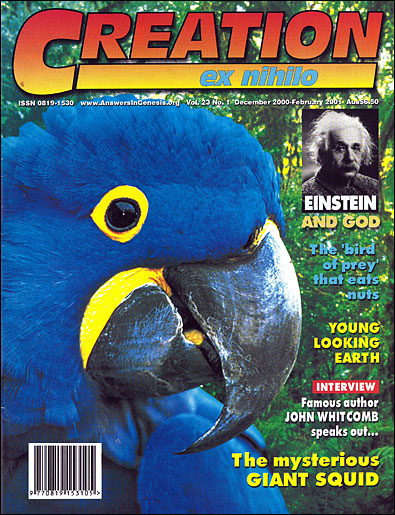
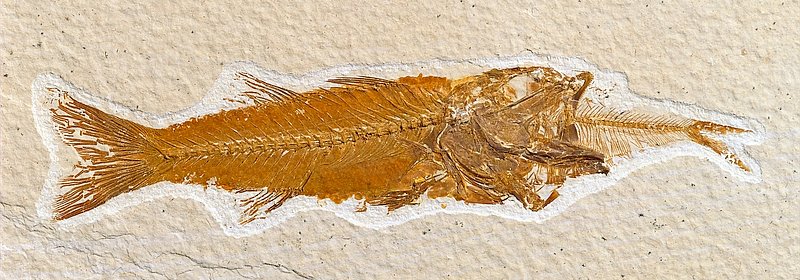







Readers’ comments
Comments are automatically closed 14 days after publication.